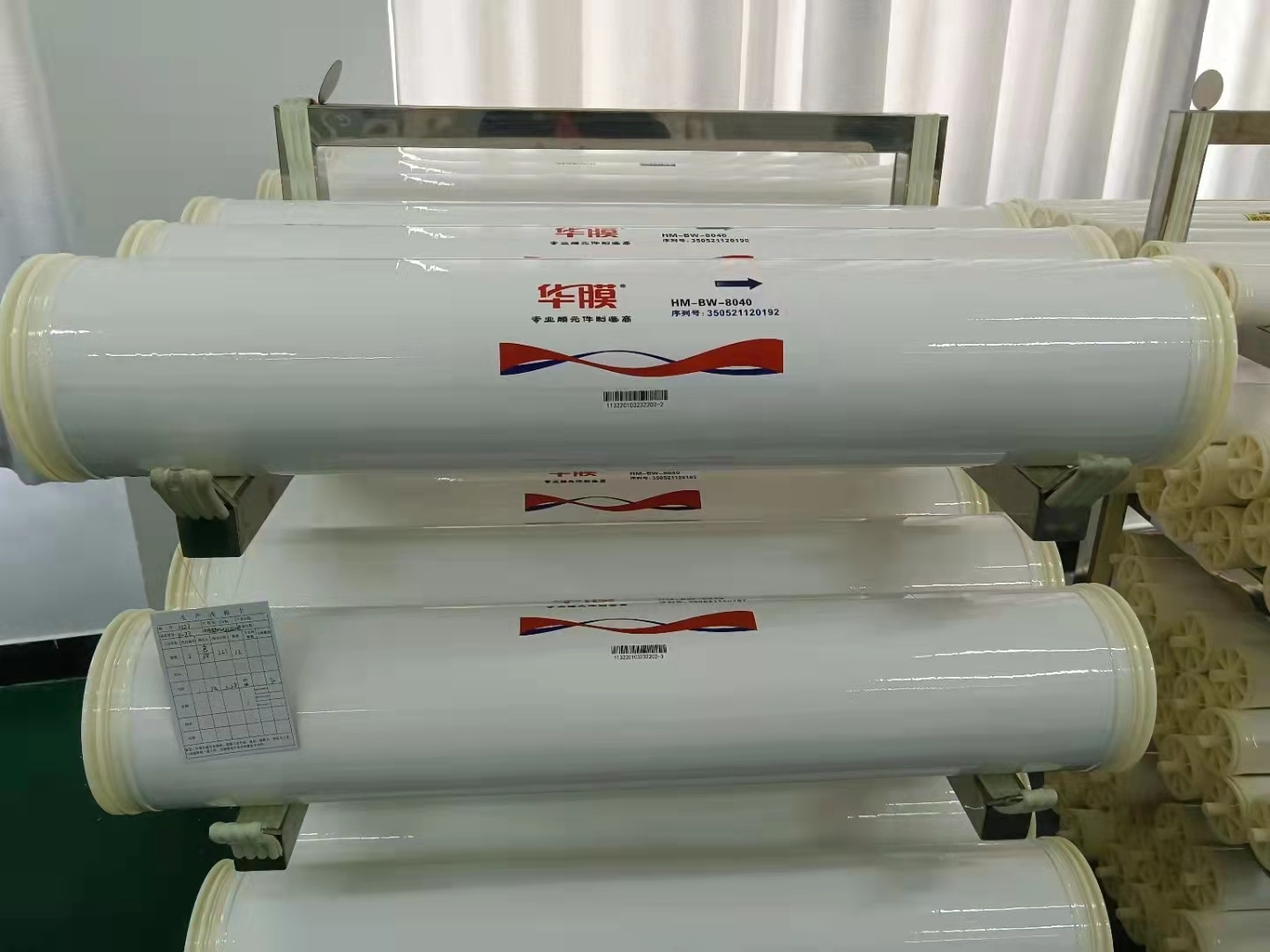Types of Reverse Osmosis Membranes
2022-04-08

Reverse osmosis, also known as reverse osmosis, is a membrane separation operation that uses a pressure difference as a driving force to separate a solvent from a solution. Apply pressure to the feed liquid on one side of the membrane. When the pressure exceeds its osmotic pressure, the solvent will reverse osmosis against the direction of natural osmosis. Thereby, the permeated solvent, ie permeate, is obtained on the low pressure side of the membrane; the concentrated solution, ie the concentrated solution, is obtained on the high pressure side. If reverse osmosis is used to treat seawater, fresh water is obtained on the low pressure side of the membrane, and brine is obtained on the high pressure side.
There are many types of HUAMO RO Membranes:
1. Cellulose acetate is mainly made of cellulose cotton and wood as raw materials. After lipidation and hydrolysis, it is made into cellulose acetate, which is processed into reverse osmosis membrane.
2. Polyamides include aliphatic polyamides and aromatic polyamides. At present, aromatic polyamide membranes are the most used. The applicable pH range can be as wide as 2-11, but they are very sensitive to free chlorine in water.
3. Composite membrane
Reverse osmosis usually uses asymmetric membranes and composite membranes, and the equipment used is mainly hollow fiber type or roll type membrane separation equipment.
The Reverse Osmosis Membrane can intercept various inorganic ions, colloidal substances and macromolecular solutes in the water, so as to obtain purified water. It can also be used for pre-concentration of macromolecular organic matter solutions. Due to the simple process of reverse osmosis and low energy consumption, it has developed rapidly in the past 20 years. It has been widely used in seawater and brackish water desalination, boiler water softening and wastewater treatment, and combined with ion exchange to produce high-purity water, and its application range is expanding.
With the maturity and development of technology, reverse osmosis membrane technology has been widely used in seawater, brackish water desalination, ultrapure water treatment in electronics, semiconductor industry, pure water treatment in chemical and pharmaceutical industries, food, beverage, drinking water treatment and other industries. widely used.
At present, many water purifiers on the market use RO reverse osmosis technology, which is a membrane separation operation that uses pressure difference as the driving force to separate the solvent from the solution. Apply pressure to the feed liquid on one side of the membrane. When the pressure exceeds its osmotic pressure, the solvent will reverse osmosis against the direction of natural osmosis. Thus, the permeated solvent is obtained on the low pressure side of the ULP RO Membrane, that is, the permeate (that is, the pure water in our water purifier can be directly drunk); the concentrated solution is obtained on the high pressure side, that is, the concentrated solution (that is, the waste water, which can be directly discharged or also wastewater can be reused). The pure water obtained from the low-pressure side has been filtered out of rust, bacteria, heavy metal ions, etc., and can be directly consumed with confidence.



